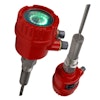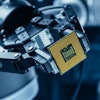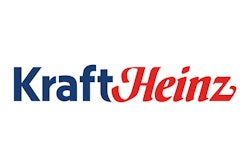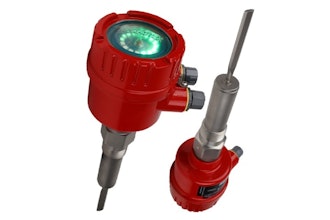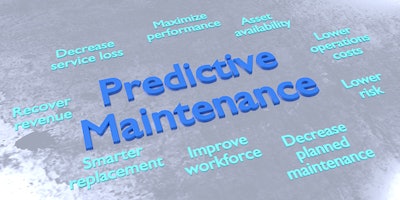
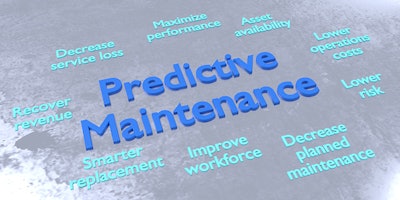
 Kenneth Sanford
Kenneth SanfordPredictive maintenance is a trend seeping into almost all industries, and food manufacturing seems to be the next field to be revolutionized by its usefulness. Predictive maintenance has infiltrated the manufacturing industry, proving incredibly powerful in reducing machine downtime. Since poor maintenance can reduce a plant’s productivity anywhere from 5-20 percent, plant managers have been eager to adopt this new technology that drastically reduces or even eliminates unexpected downtime, which costs U.S. manufacturers an estimated $50 billion each year.
Predictive maintenance techniques calculate and determine risk factors for each machine, detecting problems unable to be seen by the human eye. Using the Internet of Things (IoT), machines can then alert a human to a potential problem, which can then be solved, reducing the risk of shutting down the machine completely or disrupting the workflow. This technology is maximizing the lifespan of manufacturing equipment and reducing costly disruptions.
For food manufacturers, certain benefits of predictive maintenance mirror that of all manufacturing plants. All manufacturers can take a proactive, rather than reactive, approach to maintenance. Tools and parts can be automatically ordered when necessary, alerts will notify managers when parts might break down and humans can better analyze the conditions of machines. The most significant difference is that for food manufacturers, the result of malfunctioning equipment can have devastating, and even deadly, consequences.
The Risk Of Halted Production For Food Manufacturers
Halting the line in food manufacturing is very different than, say, the production of car parts. While safety is a huge concern for both, if the production of car parts is paused, the part will not deteriorate while waiting for production to resume. If manufacturing is suspended in a food facility, however, the ingredients can sour, potentially causing those who consume the food to get sick. The company then must issue a recall, endure legal repercussions and be responsible for any injured parties.
Unfortunately for food manufacturers, there are many points in the production line where machines can go down, endangering the quality of the product. Low equipment reliability usually means a high risk of food contamination. And if equipment breaks while in production, this could mean broken pieces getting in the food, as well.
There have been numerous cases of food recalls due to manufacturing malfunctions. These, and all other recalls around the world, sicken consumers and damage the reputation of the company responsible, showcasing the need for secure equipment in the food manufacturing line.
Food manufacturers also do not want to lose revenue. If production is halted because of a contaminant, the company can suffer financially. Dumping large quantities of ingredients or portions of food that have been contaminated, or might have been contaminated, means monetary losses for the company.
The environmental impact can be considerable, as well. If food production goes as planned, there is less energy consumption as machines do not need to double the work. If the production is halted, the machines must essentially redo the work, which increases energy use. If production is halted and the food is contaminated, then the product needs to be disposed of, resulting in significant food waste.
The risk for halted production in food manufacturing can be devastating, which is why predictive maintenance processes are being implemented in plants around the world.
Predictive Maintenance In Food Manufacturing
Reducing health risks and overall production costs are reasons enough why predictive maintenance is entering the food industry. IoT sensors are revolutionizing the way machines are maintained, giving employees real-time insight into problems. For example, if an oven begins to malfunction, sensors can alert employees in time for them to adjust the machine as not to ruin the batch of food. This goes for any machine in the plant; staff can adjust or tweak poor performing machines in real-time, reducing the need to shut down production completely.
Also, when a product is potentially sickening consumers, manufacturers that use predictive maintenance will have documented performance reports for their equipment. This means that they can trace back the food production line to help figure out the source of the contaminants. Doing this helps companies know whether or not to recall products.
Predictive maintenance also ensures equipment reliability, which is a core necessity of food manufacturing. This technology improves food product safety and lowers the risk of a public health problem. Machine failure in this industry means heavy losses for owners, potential health issues for consumers and reduced trust in the brand.
Reducing the risk of equipment failure in this industry is crucial, which is why it’s no surprise that manufacturers will spend $74.8 billion per year on smart factory technology by 2020, according to Markets and Markets. And McKinsey estimates that the total economic impact of smart factories could reach $3.7 trillion per year by 2025. Smart factories are now entering the world of food production, revolutionizing production lines and increasing safety.
Dr. Ken Sanford is the US lead Analytics Architect for Dataiku


